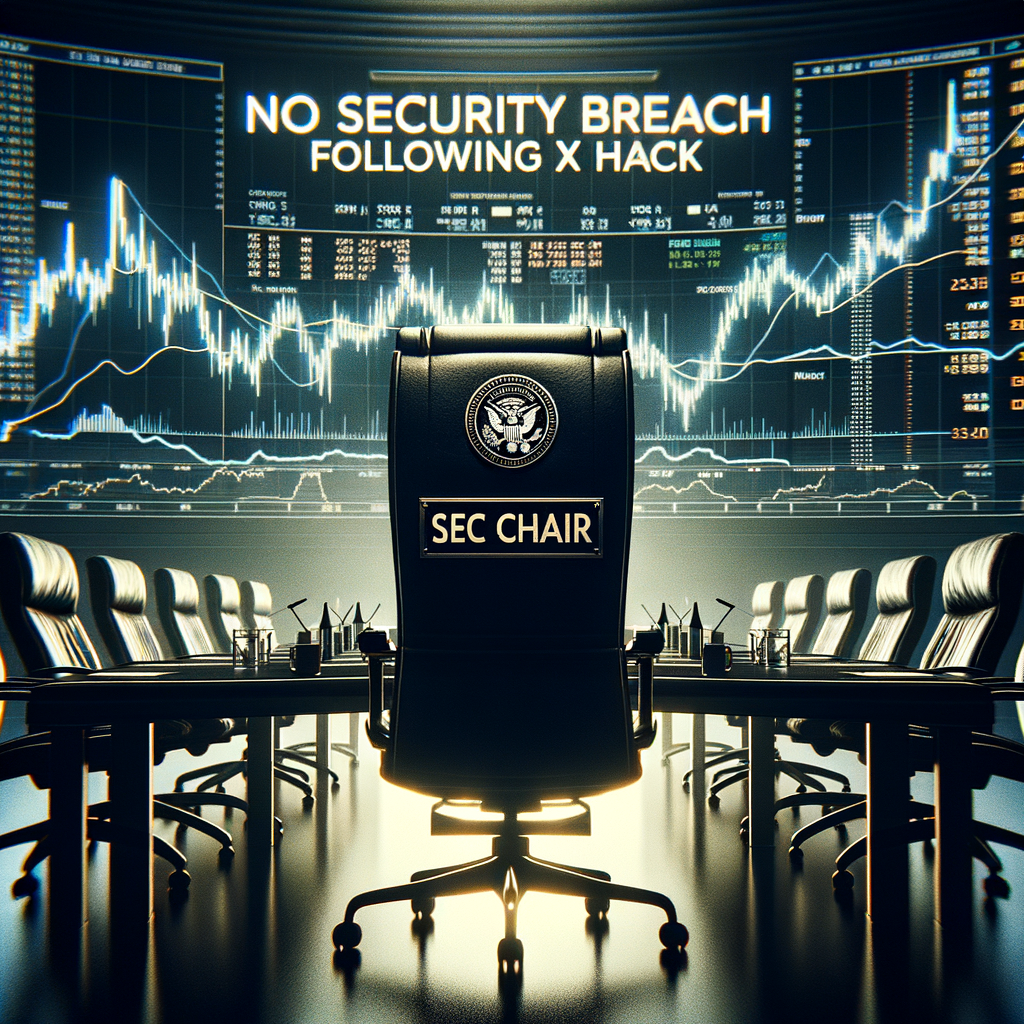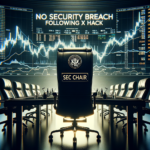Analyzing SEC Chair Gary Gensler’s Response to the X Hack Incident
SEC Chair Gary Gensler Confirms No Security Breach Following X Hack
In the wake of the recent X hack, a cyber incident that sent ripples of concern throughout the financial sector, SEC Chair Gary Gensler has stepped forward to provide reassurance to investors and stakeholders. Gensler confirmed that the Securities and Exchange Commission (SEC) experienced no security breach, a statement that has been met with a collective sigh of relief from the market.
The X hack, which targeted a prominent financial institution, raised alarms over the potential vulnerability of other key players in the financial system. However, Gensler’s swift response underscored the SEC’s robust cybersecurity measures and its preparedness to confront digital threats. His reassurance is not only a testament to the SEC’s current security protocols but also reflects an optimistic outlook for the agency’s ability to safeguard market integrity.
Gensler’s announcement came at a critical moment, as investors and the public sought clarity and confidence in the financial system’s resilience. By confirming the SEC’s immunity to the breach, Gensler effectively quelled fears of a domino effect that could have destabilized the sector. Moreover, his proactive communication strategy demonstrated the SEC’s commitment to transparency, a quality that is essential in maintaining trust in times of potential crisis.
The SEC’s response to the X hack incident also highlights the ongoing efforts to fortify the financial industry against cyber threats. Gensler has been an advocate for stringent cybersecurity regulations, recognizing that the digital landscape is fraught with risks that can have far-reaching consequences. His leadership in this area suggests a forward-thinking approach, one that prioritizes the development of advanced defenses against increasingly sophisticated cyberattacks.
Furthermore, Gensler’s optimism is not unfounded. The SEC has been working diligently to enhance its cyber infrastructure, collaborating with other regulatory bodies and industry experts to stay ahead of potential threats. This collaborative spirit is crucial, as cybersecurity is a shared responsibility that benefits from the collective expertise and resources of multiple stakeholders.
The SEC’s clean bill of health in the aftermath of the X hack also serves as a reminder of the importance of ongoing vigilance. Gensler has emphasized the need for continuous improvement in cybersecurity measures, acknowledging that the threat landscape is ever-evolving. His forward-looking stance encourages a culture of innovation within the SEC, where staying ahead of cyber threats is an integral part of the agency’s mission to protect investors.
In conclusion, SEC Chair Gary Gensler’s response to the X hack incident has been a beacon of reassurance in a time of uncertainty. His confirmation of the SEC’s security in the face of this cyber challenge has not only allayed immediate concerns but also reinforced the agency’s reputation as a bulwark against digital threats. Gensler’s optimistic outlook, grounded in a commitment to robust cybersecurity practices and regulatory collaboration, bodes well for the future of financial market security. As the financial industry continues to navigate the complexities of the digital age, the SEC’s proactive and positive approach under Gensler’s leadership is a promising sign of resilience and readiness.
The Implications of SEC’s Security Measures Post-X Hack According to Gary Gensler
SEC Chair Gary Gensler Confirms No Security Breach Following X Hack
In the wake of the recent X hack that sent shockwaves through the digital world, the Securities and Exchange Commission (SEC) has been under intense scrutiny. Investors, stakeholders, and the public alike have been anxiously awaiting confirmation on the integrity of the SEC’s cybersecurity measures. In a reassuring announcement, SEC Chair Gary Gensler confirmed that the regulatory body experienced no security breach, a testament to the robustness of its digital defenses.
The X hack, which targeted a number of high-profile institutions, raised concerns about the potential vulnerability of financial regulatory systems. However, the SEC’s ability to withstand this cyber onslaught has provided a much-needed sense of security to the market. Gensler’s confirmation not only alleviates immediate fears but also underscores the effectiveness of the SEC’s ongoing efforts to fortify its cyber infrastructure.
The implications of the SEC’s resilience in the face of such a sophisticated attack are far-reaching. For one, it sends a clear message to cybercriminals that the SEC is well-prepared to defend against and respond to cyber threats. This proactive stance is crucial in an era where digital incursions are becoming increasingly common and sophisticated. Moreover, it reinforces the SEC’s commitment to safeguarding the financial information and assets of millions of Americans.
Furthermore, the SEC’s successful defense against the X hack serves as a benchmark for other financial institutions. It highlights the importance of investing in cybersecurity and the need for constant vigilance. The SEC’s approach to cybersecurity can serve as a blueprint for other organizations, emphasizing the need for robust security protocols, regular system updates, and comprehensive employee training on cyber threats.
Gensler’s optimistic outlook following the incident is not without merit. The SEC’s security measures have been subjected to real-world stress tests, and their success in preventing a breach is a positive sign for the future. It demonstrates that with the right strategies and resources, even the most formidable cyber threats can be effectively managed.
The SEC’s experience also underscores the importance of collaboration among financial institutions, cybersecurity experts, and government agencies. Sharing information about threats and best practices can create a stronger collective defense against cyber attacks. This collaborative approach is essential in adapting to the ever-evolving landscape of cyber threats.
In the aftermath of the X hack, the SEC’s transparency about its cybersecurity posture is commendable. By openly discussing its security measures and the outcomes of attempted breaches, the SEC is fostering a culture of trust and accountability. This transparency not only reassures the public but also encourages other organizations to be forthright about their cybersecurity efforts.
In conclusion, the SEC’s confirmation of no security breach following the X hack is a significant development in the financial world. It not only demonstrates the effectiveness of the SEC’s cybersecurity measures but also sets a positive example for other institutions. As cyber threats continue to loom large, the SEC’s experience serves as a beacon of hope, showing that with diligence, collaboration, and investment in cybersecurity, it is possible to protect the integrity of our financial systems. Gensler’s optimistic tone is not only appropriate but necessary, as it instills confidence in the SEC’s ability to navigate the digital age securely and successfully.







